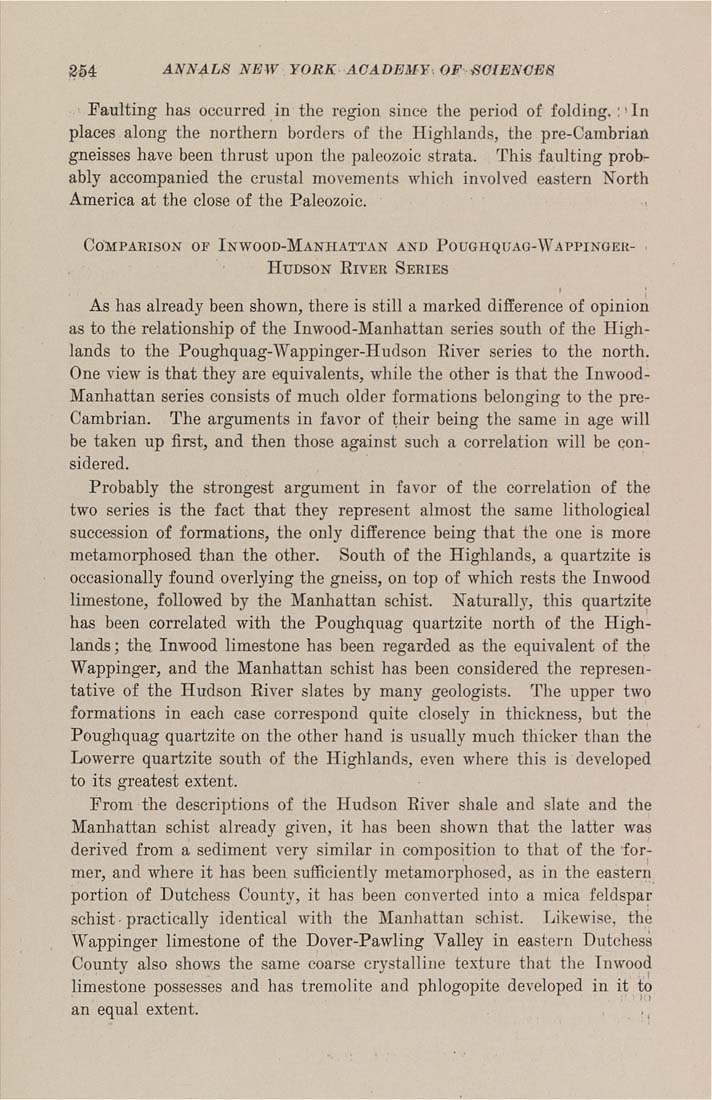g54 ANNALS NEW YORK ACADEMY. OF -SCIENCES
Faulting has occurred in the region since the period of folding. :'In
places along the northern borders of the Highlands, the pre-Cambrian
gneisses have been thrust upon the paleozoic strata. This faulting prob¬
ably accompanied the crustal movements which involved eastern North
America at the close of the Paleozoic.
Comparison of Inwood-Manilattan and Poughquag-Wappingek- -
Hudson River Series
As has already been shown, there is still a marked difference of opinion
as to the relationship of the Inwood-Manhattan series south of the High¬
lands to the Poughquag-Wappinger-Hudson River series to the north.
One view is that they are equivalents, while the other is that the Inwood-
Manhattan series consists of much older formations belonging to the pre-
Cambrian. The arguments in favor of their being the same in age will
be taken up first, and then those against such a correlation will be con¬
sidered.
Probably the strongest argument in favor of the correlation of the
two series is the fact that they represent almost the same lithologieal
succession of formations, the only difference being that the one is more
metamorphosed than the other. South of the Highlands, a quartzite is
occasionally found overlying the gneiss, on top of which rests the Inwood
limestone, followed by the Manhattan schist. Naturally, this quartzite
has been correlated with the Poughquag quartzite north of the High¬
lands ; the Inwood limestone has been regarded as the equivalent of the
Wappinger, and the Manhattan schist has been considered the represen¬
tative of the Hudson River slates by many geologists. The upper two
formations in each case correspond quite closely in thickness, but the
Poughquag quartzite on the other hand is usually much thicker than the
Lowerre quartzite south of the Highlands, even where this is developed
to its greatest extent.
From the descriptions of the Hudson River shale and slate and the
Manhattan schist already given, it has been shown that the latter was
derived from a sediment very similar in composition to that of the for¬
mer, and where it has been sufficiently metamorphosed, as in the eastern
portion of Dutchess County, it has been converted into a mica feldspar
schist-practically identical with the Manhattan schist. Ijikewise, the
Wappinger limestone of the Dover-Pawling Valley in eastern Dutchess
County also shows the same coarse crystalline texture that the Inwood
limestone possesses and has tremolite and phlogopite developed in it to
an equal extent.
I
|








